Below is a list of the four formats in which it comes on Amazon.
- Hardcover – Publisher : W. W. Norton & Company; First Edition (May 2, 2017), ASIN : 0393609391, ISBN-10 : 9780393609394, ISBN-13 : 978-0393609394, 224 pages, item weight : 2.31 pounds, dimensions : 7.3 x 4.8 x 0.9 inches, it costs $6.21 – $13.26 on US Amazon. Click here to order it from Amazon.com.
- Kindle – Publisher – W. W. Norton & Company (May 2, 2017), ASIN : B01MAWT2MO, 222 pages, it costs $9.00 on US Amazon. Click here to order it from Amazon.com.
- Audiobook – Publisher : Blackstone Audio Inc (May 2, 2017), ASIN : B06XB2PX7G, it costs $10.20 on US Amazon. Click here to order it from Amazon.com.
- Audio CD – Publisher : Blackstone Publishing; Unabridged edition (May 2, 2017), ISBN-10 : 1538408015, ISBN-13 : 978-1538408018, it costs $24.95 on US Amazon. Click here to order it from Amazon.com.
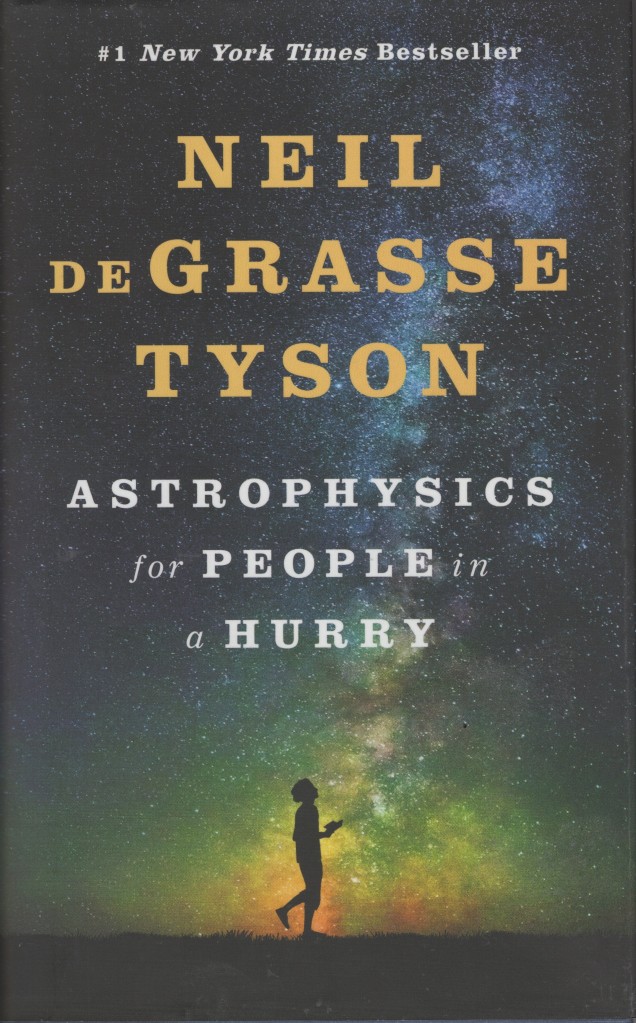
Amazon’s Description of Astrophysics for People in a Hurry
Over a year on the New York Times bestseller list and more than a million copies sold.
The essential universe, from our most celebrated and beloved astrophysicist.
What is the nature of space and time? How do we fit within the universe? How does the universe fit within us? There’s no better guide through these mind-expanding questions than acclaimed astrophysicist and best-selling author Neil deGrasse Tyson.
But today, few of us have time to contemplate the cosmos. So Tyson brings the universe down to Earth succinctly and clearly, with sparkling wit, in tasty chapters consumable anytime and anywhere in your busy day.
While you wait for your morning coffee to brew, for the bus, the train, or a plane to arrive, Astrophysics for People in a Hurry will reveal just what you need to be fluent and ready for the next cosmic headlines: from the Big Bang to black holes, from quarks to quantum mechanics, and from the search for planets to the search for life in the universe.
This is my four-star review for Astrophysics for People in a Hurry
The reason I gave the book four stars instead of five is because I felt that if you have an interest in the topic, you will have heard it all before. However, in retrospect that might not be a good reason to deduct a star. After all, the book seems to be targeting people who do not know much about the subject and thus will not have heard it all before.
Quick and Entertaining Overview of Astrophysics
I’ve read a number of Neil DeGrasse Tyson’s books and I love them. This book is a compressed version of what he has been explaining in other books. If you’ve already read a number of Neil De Grasse books, or perhaps other popular science Astrophysics books such as those by Stephen Hawking, you will not find much new in this book. However, I think it is a brief but good summary of Astrophysics written for a layman. It is 208 pages, each page having about half as much text per page as a typical popular science book. It is an easy and fairly quick read.
He briefly explains the Big Bang, physical laws, spectra, nebulae, the speed of light, very briefly relativity and quantum physics, the cosmic background radiation, galaxies, gravitational lensing, dark matter, dark energy, neutron stars, the composition of the solar system and exoplanets. He covers a lot of ground quickly and he makes it easy to understand without simplifying so much that it becomes misleading. This book is exactly what the title says. However, as I mentioned, if you’ve read a lot on the topic already, especially if it is Neil DeGrasse Tyson’s books, you’ve seen it before. I still think it was very enjoyable though and I still learned something new. He is a very entertaining author.
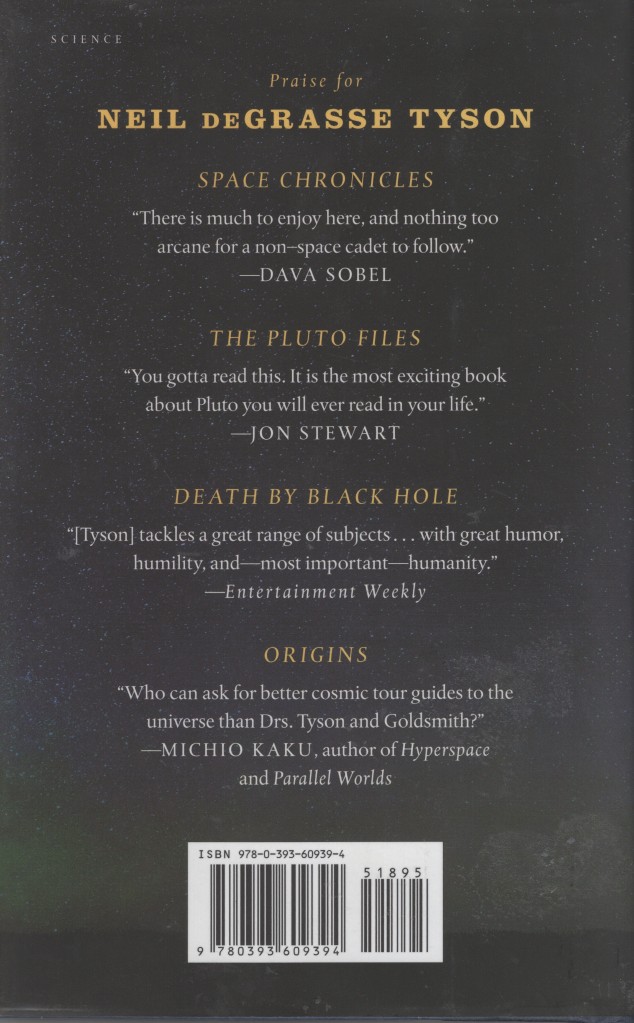
To see the Super Facts click here
]]>This is a submission for Kevin’s No Theme Thursday

For us in Dallas, Texas, 2024 was the year when the sun and the moon put up an unforgettable spectacle for all of us to see. On April 8, 2024, the sun and the moon and earth lined up perfectly so that the moon fully covered the sun. We had a total solar eclipse, and we were lucky with the weather. I can add that experiencing a total solar eclipse is quite different from experiencing a partial or annular solar eclipse. I’ve experienced a partial solar eclipse as well and I can attest to the difference.
Unlike a partial eclipse, it gets dark during a total solar eclipse, the stars come out if the sky is clear like it was. The birds and the insects become quiet. It happens very suddenly, in just a few seconds. The total solar eclipse lasted four minutes.
The Motion of the Sun and the Moon
To understand what a solar eclipse is, the video below might help. What you see is the moon and the earth as seen from the sun’s viewpoint. We see earth all lit up by the sun, like a full moon, and we also see the moon lit up by the sun.
In this situation, when the people on earth look up in the sky, they see the sun, but they don’t see the moon, even though it is there. It is a new moon, or a black moon if it happens twice in the same month. As the moon begins to partially cover the sun the shadows on the ground start looking different and if you use solar eclipse glasses you can see the sun disappearing and looking like a bright crescent, but it is still daylight and looking at the sun without eclipse glasses would just hurt your eyes.
Well, this is true until the sun is fully covered by the moon. When that happens, the light turns off and at that point it is safe to look at the sun without glasses. What you’ll see is a pitch-black circle in the sky surrounded by wispy faint lights. Those wispy faint lights are the sun’s corona.
Below is a youTube video showing an animation composed of actual satellite photos by NASA.
Solar Eclipse Preparation
I drank a very special beer for the occasion, a Trappist Belgian Strong Ale, or Quadruple, called Westvleteren 12 from Brouwerij Westvleteren (Sint-Sixtusabdij van Westvleteren).



The Partial Eclipse Phase
It was partially cloudy during the partial eclipse, but we were able to get a good look at the eclipse as it progressed. As mentioned, to see the partial eclipse, you have to use good solar eclipse glasses. It is primarily for safety reasons, but it is also pointless to look at the sun during a partial eclipse. You won’t see the eclipse crescent because the powerful light from the sun overwhelms your view.
I had a little filter that was placed in front of my phone camera as I took a few pictures. Admittedly they were pretty bad. I have an old Samsung Galaxy S8+ but even using newer phones it is difficult to get decent photos of something like this.
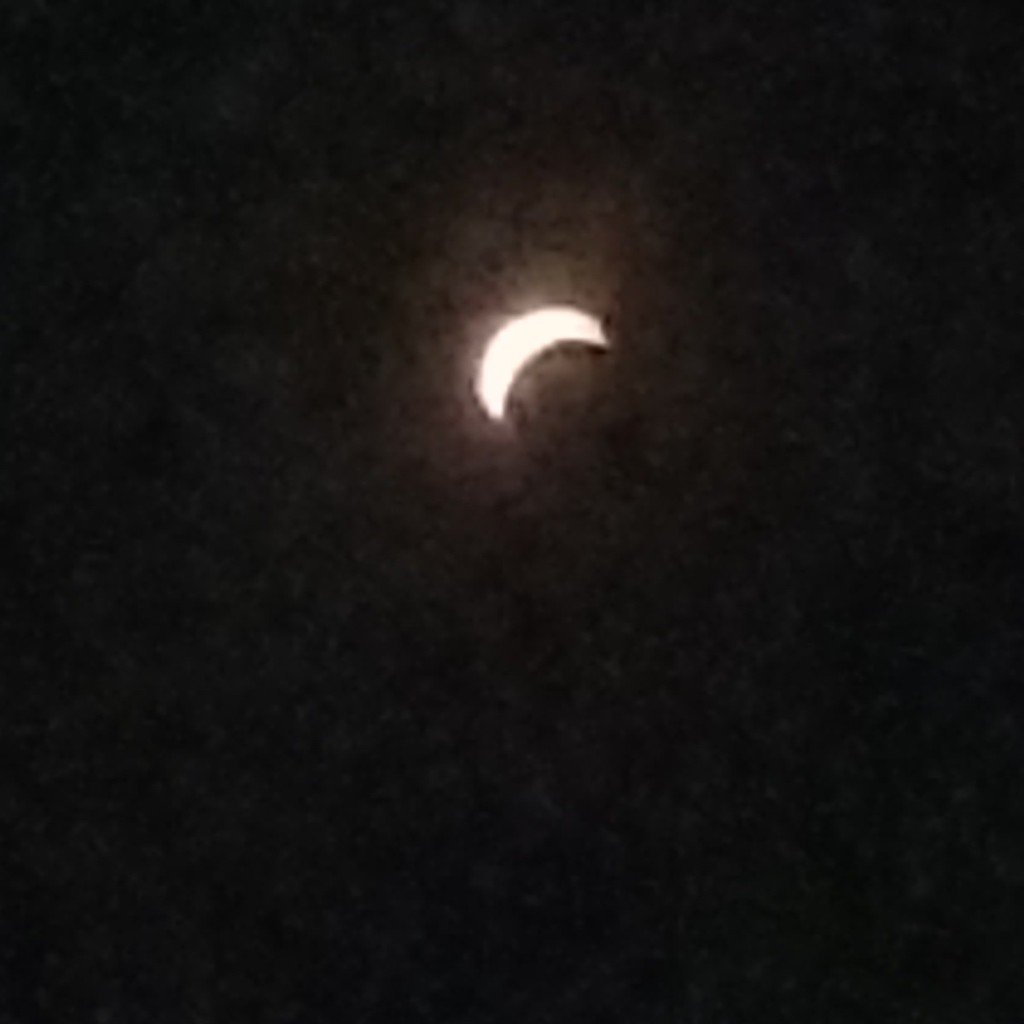
The Total Eclipse
At 1:40PM Dallas time the total solar eclipse happened and luckily it was not covered by clouds. At this point it suddenly got dark and it was safe to look straight at the sun without using the eclipse glasses. The total eclipse lasted four minutes. I have included a shutter stock photo below which closely represents what we actually saw. We saw a black circle and around the black circle was a wispy white fog like light. This was the sun’s corona and it shone with about the same power as the full moon. It kind of looked like a black hole.
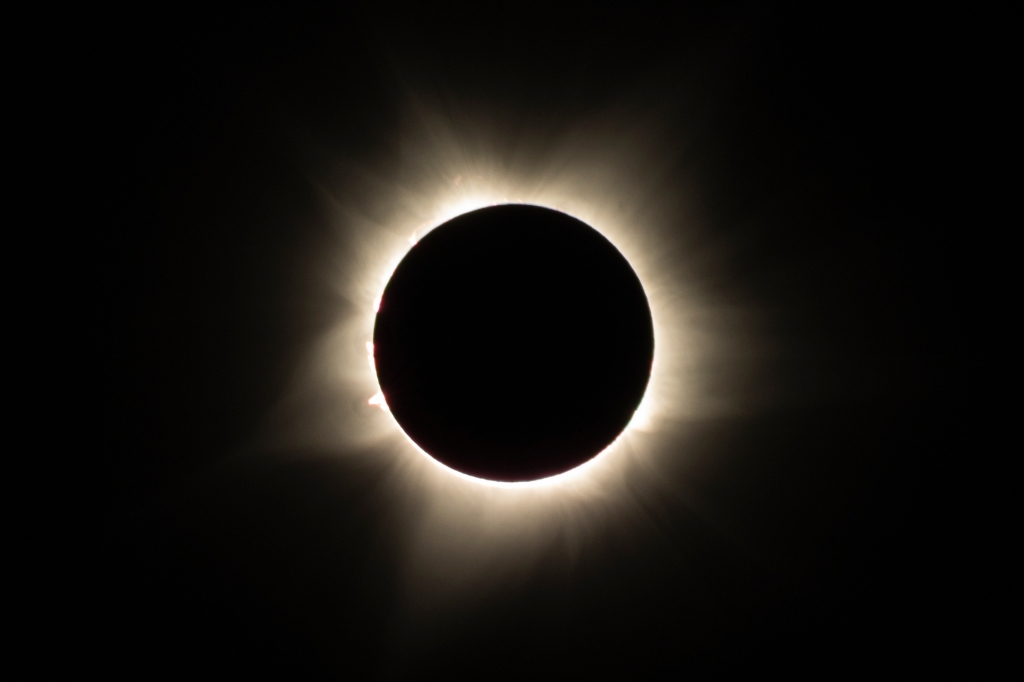
The Stars and the Planet Venus
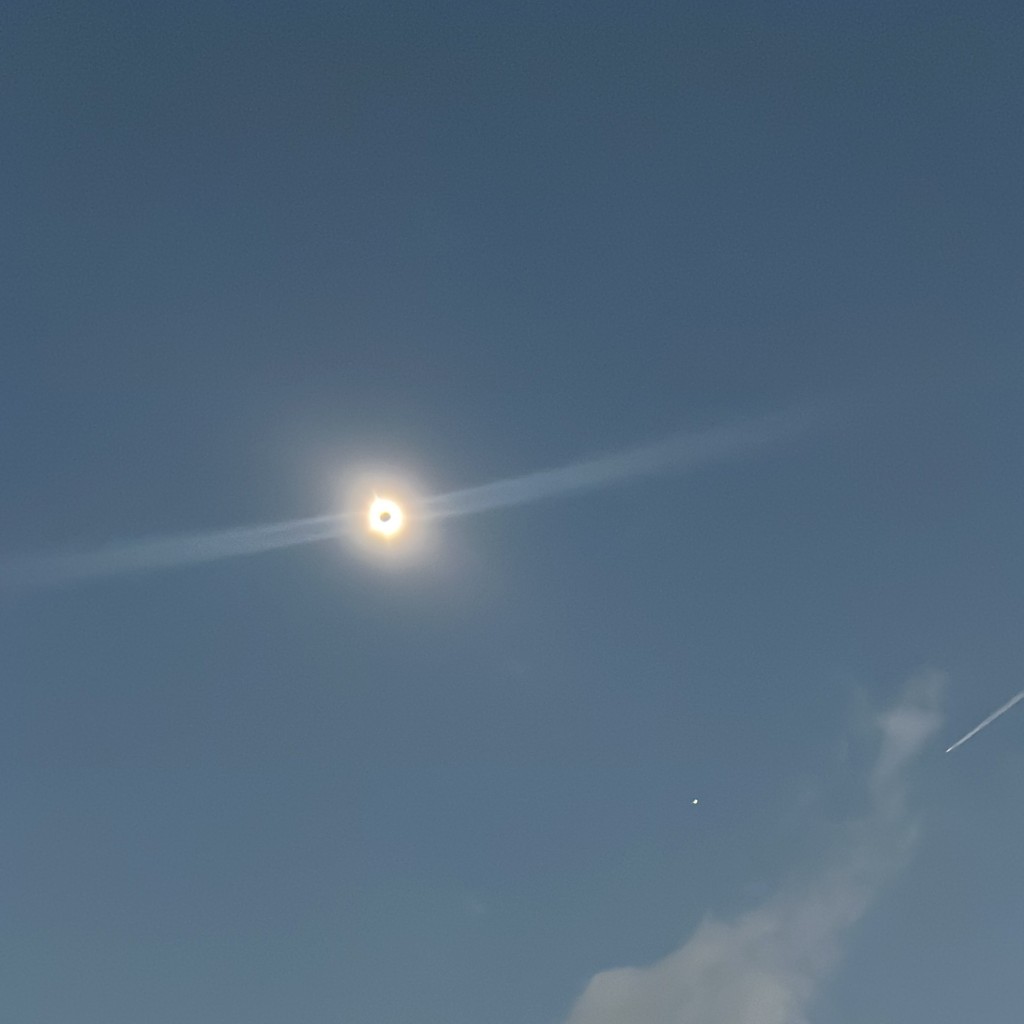
Total Eclipse Photos
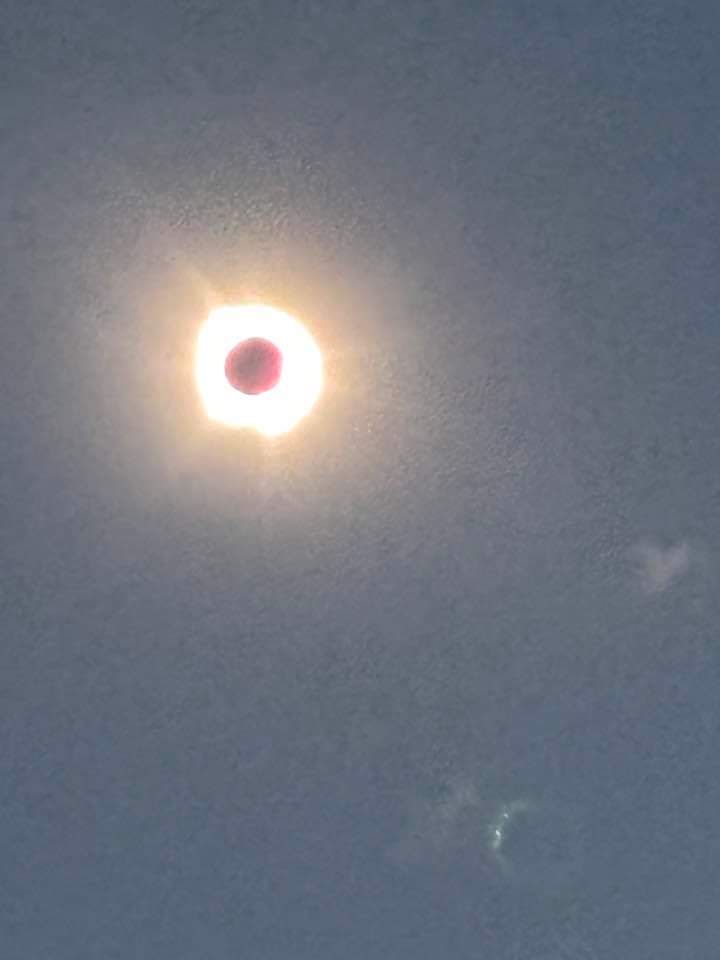
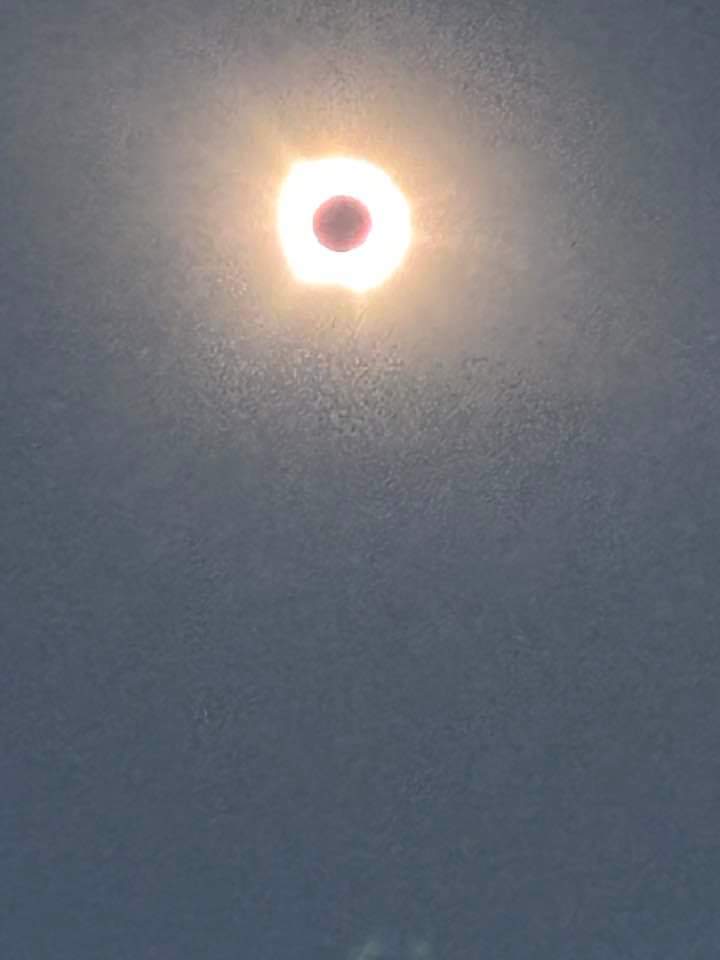
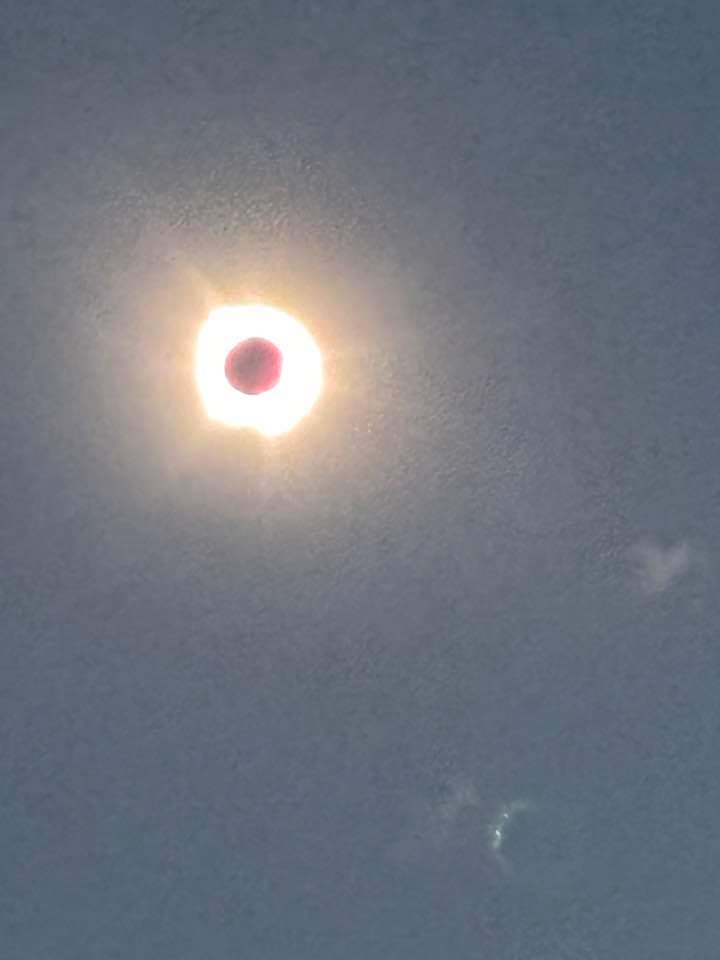
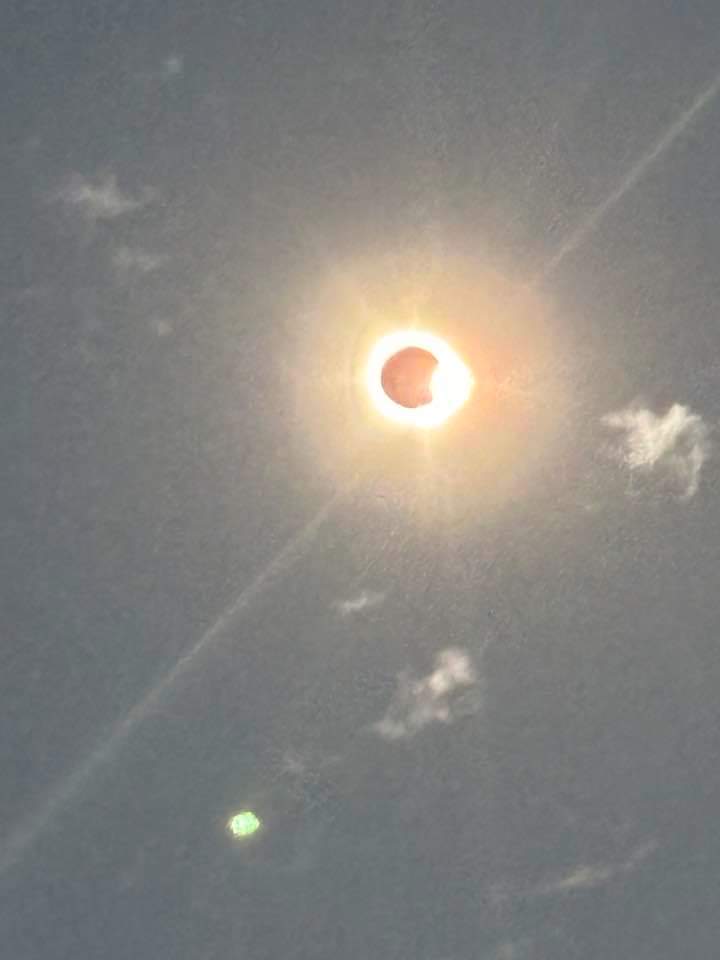
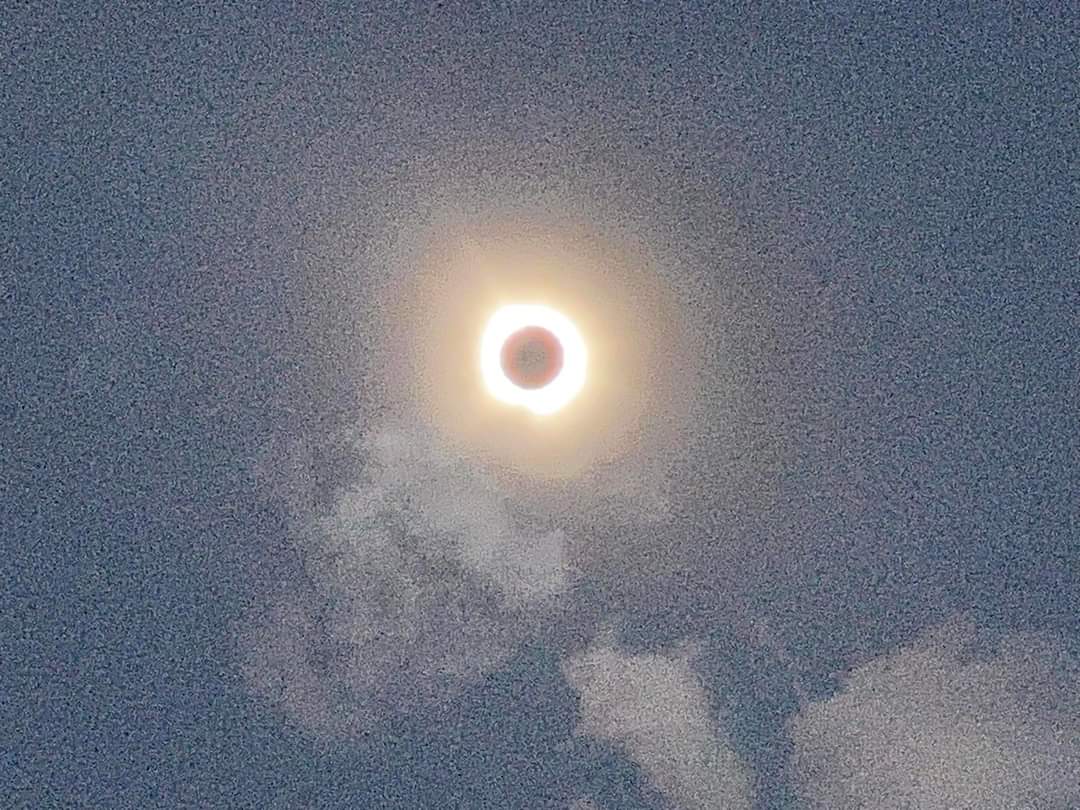
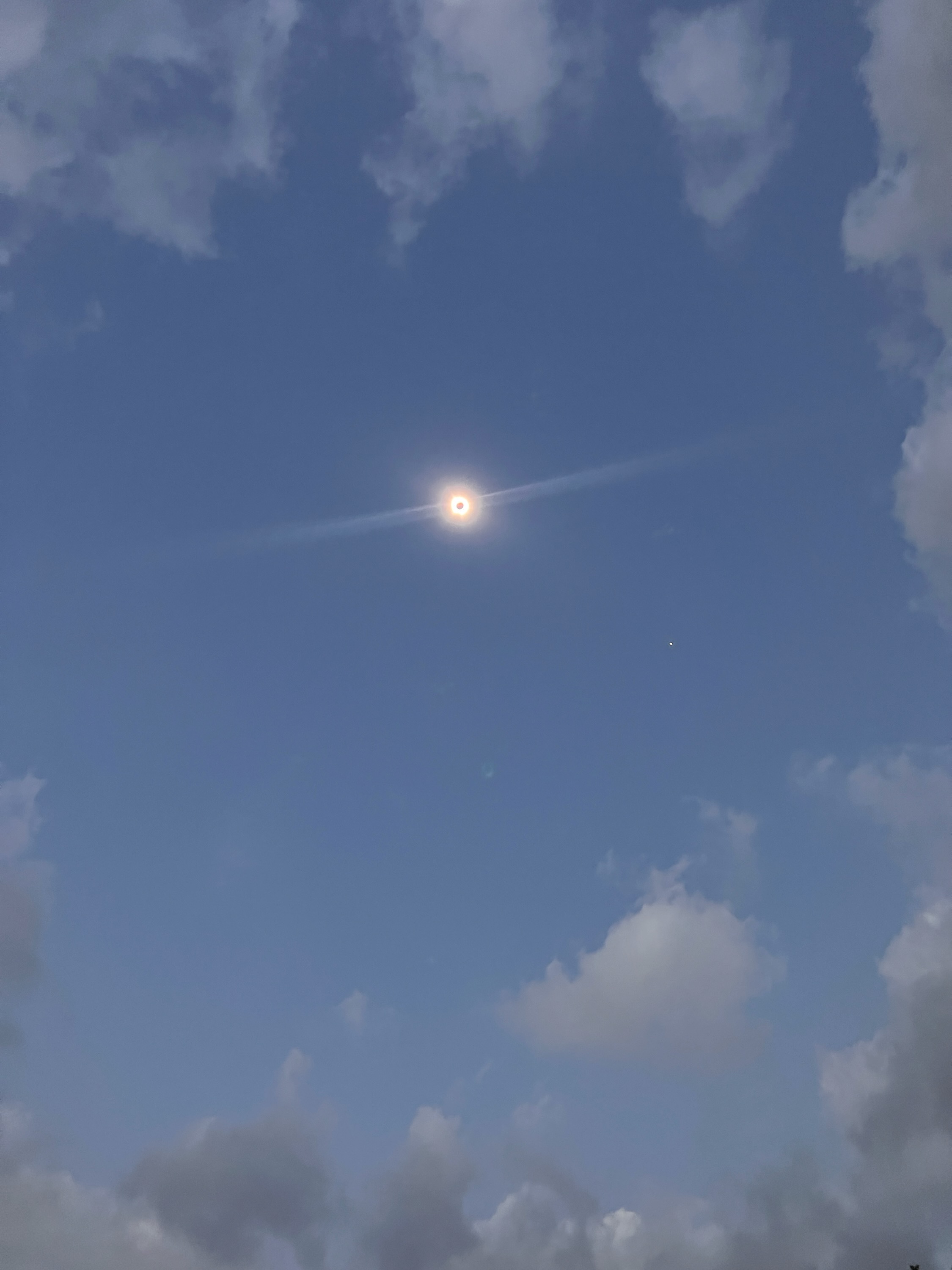

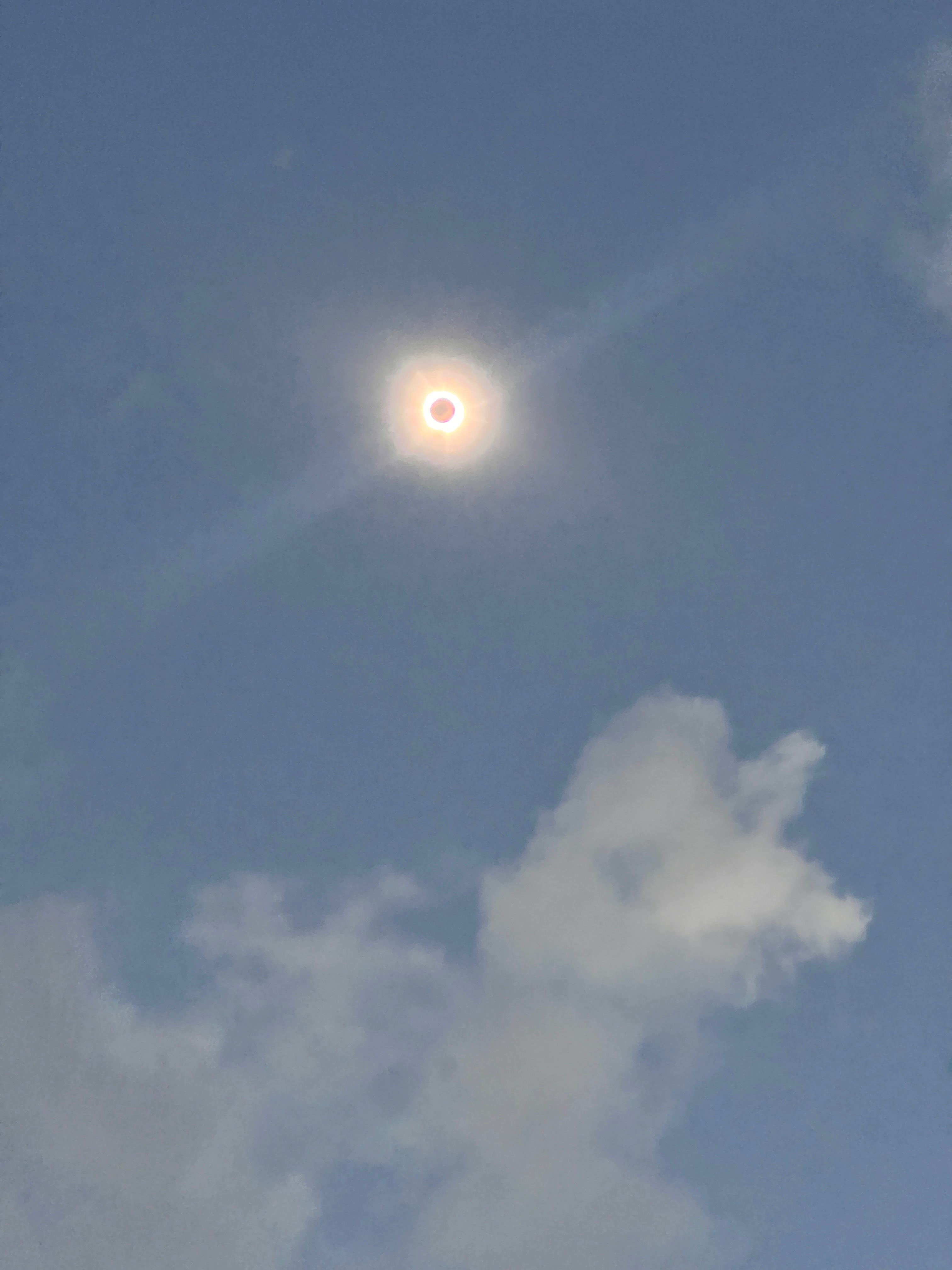
These eight pictures were taken with cell phones by my daughter Rachel, Denise Mosier-Wanken, and Margaret Weiss Bloebaum.
Did you see the total solar eclipse?
To see the Super Facts click here
]]>
I think this is a super-fact, because the Turkey is a very important bird to Americans and at the same time a lot of people, including Americans, do not know that Turkeys are not flightless birds.
Domesticated turkeys are flightless but wild turkeys are not flightless. Wild turkeys can fly distances of more than a mile, sometimes at speeds of 55 miles per hour. I’ve seen it with my own eyes on turkey hunts. I’ve seen turkeys fly and glide across the sky at the height of 30-50 feet. I’ve seen them flap their wings and then take off.


The photo above is a Tom, a male turkey, that my oldest son shot when he was 11 years old. Male turkeys are called Toms and females hens. We took it to a taxidermist for preservation and mounting. I should add that we typically ate the meat of everything we shot. Taking a wild turkey to the taxidermist makes eating the animal more complicated but you can typically ask for the breast meat of the turkey.
Personally, I think that legal hunting is a lot more humane than eating meat from animals from factory farms.

I should add that legal hunting is often encouraged for conservation and population management. For example, moose are hunted in Sweden (my native country) to manage their large population (400,000 moose), which can cause damage to forests and agriculture, as well as starvation among moose, if not managed. Illegal hunting, on the other hand, is something nefarious. Below is a video showing wild turkeys flying (video is about one minute long).
I wish everyone a very happy Thanksgiving
To see the other Super Facts click here
]]>
I am considering this a super-fact because almost every time I see this the person being impersonated states “….I have been hacked”. Most likely they have not been hacked. They don’t need to change their password or take special precautions related to their account or password. It is not the problem.
Facebook is the world’s largest social network with over 3 billion users and few people understand this common Facebook problem, which is why I am calling it super-fact. All that happened is that someone downloaded their photo, copied some information, and started sending out friend requests to their friends. It is so easy to do that. Any 10-year-old can do it and there’s no hacking required. If you think about it for a minute, I am sure you all could do it.
However, it is not appropriate behavior and Facebook can delete your account and ban you if you resort to this behavior.

So, what can you do to reduce the chance of being impersonated? You can go to Settings & Privacy > Privacy Settings and set your profile to private by setting “Who can see your posts?” to friends only, but if you want visibility and don’t want to go that far you can set the “Who can see your friends list?” to “only me”. You can also set “Who can see posts you’re tagged in?” to “Friends” or “Only me”. You can “Limit Who can see your profile picture and cover photo?” to “Friends.”
Additional things you can do are regularly search your name on Facebook to check for fake profiles and avoid oversharing.

The actions above will greatly reduce the chance that someone will impersonate you but if it happens anyway, you can report the offender by going to the fake profile and click on the three dots (…) on their cover photo, select “Find support” or “report profile” and choose “Pretending to Be Someone” and follow the instructions to report the account. Encourage your friends to do the same.
To see the other Super Facts click here
Have you ever been impersonated on Facebook?
]]>- Paperback – $18.95 on Amazon – future release March 25, 2025.
- Hardcover – Publisher : Princeton University Press; First Edition (September 12, 2023), ISBN-10 : 0691177295, ISBN-13 : 978-0691177298, 240 pages, item weight : 1 pounds, dimensions : 5.75 x 1 x 8.5 inches, it costs $18.95 on Amazon. Click here to order it from Amazon.com.
- Kindle – Publisher : Princeton University Press (September 12, 2023), ASIN : B0C5SBB26C, 229 pages, it costs $15.37 on US Amazon. Click here to order it from Amazon.com.
- Audio – Publisher : Princeton University Press (September 19, 2023), ASIN : B0CF6WHBVX, listening length 7 hours, narrator : Christopher Ragland, it costs $0.99 on US Amazon. Click here to order it from Amazon.com.
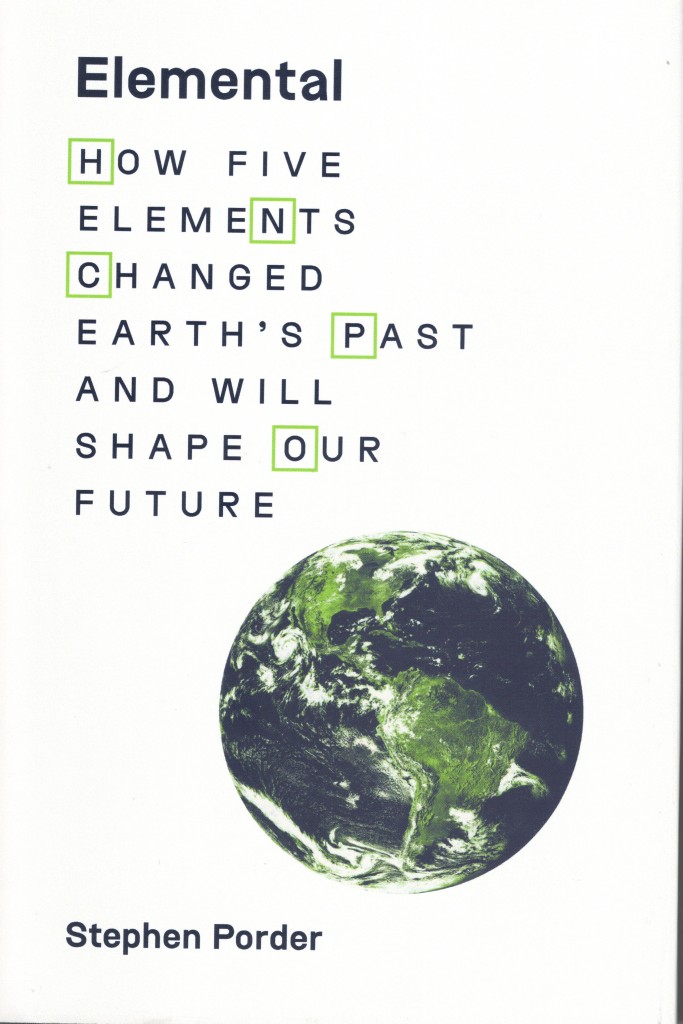
Amazon’s description of the book
It is rare for life to change Earth, yet three organisms have profoundly transformed our planet over the long course of its history. Elemental reveals how microbes, plants, and people used the fundamental building blocks of life to alter the climate, and with it, the trajectory of life on Earth in the past, present, and future.
Taking readers from the deep geologic past to our current era of human dominance, Stephen Porder focuses on five of life’s essential elements—hydrogen, oxygen, carbon, nitrogen, and phosphorus. He describes how single-celled cyanobacteria and plants harnessed them to wildly proliferate across the oceans and the land, only to eventually precipitate environmental catastrophes.
He then brings us to the present, and shows how these elements underpin the success of human civilization, and how their mismanagement threatens similarly catastrophic unintended consequences. But, Porder argues, if we can learn from our world-changing predecessors, we can construct a more sustainable future.
Blending conversational storytelling with the latest science, Porder takes us deep into the Amazon, across fresh lava flows in Hawaii, and to the cornfields of the American Midwest to illuminate a potential path to sustainability, informed by the constraints imposed by life’s essential elements and the four-billion-year history of life on Earth.
This is my five-star review for the book Elemental
The Story of HOCNP the Five Elements Essential to all Life
The author, a biogeochemist, explains why five elements, hydrogen (H), oxygen (O), carbon (C), nitrogen (N), and phosphorus (P) are essential to all life. As an example, in the sunlit waters of the central equatorial Pacific Ocean, a lack of Nitrogen creates a water desert with no life. Lifeforms that are able extract more of these elements have a competitive advantage.
This book focuses on three world-changing organisms that were able to extract unprecedented amounts of these elements from the environment also resulting in success and huge increases in the total mass of lifeforms, as well as consequences causing mass extinction eventually followed by an entirely new planet. Note this book is not about mass extinctions, which have happened at least five times, but something more profound. It is about planet-changing events.
During the first two billion years of earth’s history there had been no oxygen in the environment; oxygen was always bound to some other atom, such as hydrogen in water. There was life back then but in the form of primitive bacteria using a primitive form of photosynthesis involving sulfur. Then came cyanobacteria which had invented a more effective form of photosynthesis, as well as a way of extracting nitrogen using a process called nitrogen fixation. The two-atom nitrogen in the air is nearly inert and very difficult to use. This made cyanobacteria extremely successful.
However, one consequence was that the carbon dioxide was largely removed from the atmosphere, while the atmosphere was filled up by oxygen, which is a byproduct of the new form of photosynthesis. Carbon dioxide is a greenhouse gas that warms the planet, something scientists had already figured out in the 1850’s. With much less carbon dioxide, the earth got very cold, and a snowball earth disaster followed. However, in the long run the oxygen paved the way for the existence of multicellular life and animals. The planet changed.
About 400 million years ago plants was a new type organism that was able to extract water (hydrogen and oxygen) from land as well as phosphorus. Their success led to another depletion of carbon dioxide causing another ice period, but they paved the way for life on land. The planet changed again. Now humans, the third type of organism, are extracting all five elements in unprecedented amounts causing global warming and other unintended consequences.
Unlike cyanobacteria and plants, we are not doing this to primarily extract nutrients but for transportation, heating and consumer products and we can control and predict the consequences of our actions.
As evidence for global warming / climate change the author discusses the temperature measurement records of various organizations (NOAA etc.). That is the smoking gun.
However, he also mentions things like the fact that the vast majority of glaciers in the world are retreating or disappearing and the fact that anyone above the age of 50 who comes from a northern climate (that would be me) can attest to the fact that winters have gotten noticeably shorter snow seasons and warmer summers. That is true and it is a good thing to mention because there are those who are quick to dismiss temperature records as big hoaxes.
The second part of his global warming discussion, the evidence that we humans are the cause of the current warming, leaves something out in my opinion. He explains why the various climate models provide incontrovertible evidence that the chief cause for the current global warming is our burning of fossil fuels, despite the models being far from perfect. I totally agree with that, but once again there are those who are not willing to accept climate models as solid evidence, and therefore you should mention other evidence as well, which he does not do.
Examples of evidence that we are the cause and that does not involve complex models would be, no known natural cause can explain the current warming, the upper troposphere is cooling while the lower troposphere is warming, the arctic is warming much faster than average, nights are warming much faster than days, etc. Those are things that would not happen if the cause was a hotter sun (which we also kept a record of) or an orbital cycle.
In addition, spectral analysis shows the cause to be the adding of greenhouse gases to the atmosphere, and various isotope studies show that the carbon emissions come from the burning of hundreds of millions of years old carbon. Why not mention that as well? I know all this is baked into the models, but simple explanations appear more convincing to many. I am not taking off a star for it, but I felt it was a missed opportunity.
One environmental threat that you don’t hear much about is the depletion of phosphorus. This is something that may be far into the future but something that seems impossible to solve once it arrives and could evolve into an enormous food crisis. This was certainly a unpleasant surprise to me.
The book explains many processes and concepts, biogeochemistry, primitive photosynthesis using sulfur, photosynthesis using water (cyanobacteria) and releasing oxygen, nitrogen fixation, endosymbiosis, how plants extract phosphorus from the ground, the evolution of plants, the slow carbon cycles, the fast carbon cycle, the effect of volcanoes on climate, respiration, why can trust certain aspects of climate models, nitrogen fixation, nitrogenase, the immense effect fertilizers have had on food production, the Haber-Bosch process, earth’s climate history, why phosphorus is both finite and irreplaceable, the danger to aquifers, how we have changed ecosystems, and more.
Despite that the author makes himself understood. He explains complex concepts, so they are easy to understand and connects them all in a logical way that makes a lot of sense. So don’t be afraid that the book will be difficult to read. You may just learn a lot.
The author considers climate change / global warming to be our most serious environmental challenge, but he offers a lot of suggestions for a way forward. He discusses a lot of interesting technological solutions. I think he may be a bit gloomier than necessary but overall, what he says is very insightful and somewhat hopeful.
Again, I was very impressed by the organization of the book. It is easy to create a mess when you try to connect a lot of different concepts and complex science into a logical narrative, but he was very successful. It was a delight to read this book, it was interesting and full of facts, which were new to me, and I think are very important. I learned a lot and I think it is a very well written page turner.

To see the Super Facts click here
]]>
“Bamboozlement Misunderstandings Big Surprises and My Journey” is the first post of my super-factful blog. The goal of this blog is to create a long list of facts that are important and known to be true yet are either disputed by large segments of the public or highly surprising or misunderstood by many.
These facts are not trivia, they are accepted as true by the experts in the relevant fields, the evidence that the fact is true is impressive, and they are important to the way we view the world and to what we believe, and despite being known to be true they are hard pills to swallow for many. They are not scientific theories or complicated insights but facts that can be stated simply. In a paragraph or less. They may need more explanation than what you can fit in one paragraph, but they can be stated, perhaps with a brief explanation in just one paragraph.

In lack of a better term, I am referring to these facts as “Newstrade” and so far, I’ve made a list of more than a hundred. In addition to just stating the fact I will explain why we know that the fact is true and discuss the evidence, give background information and provide links. My posts will not be deep dives into the topics in question. However, I will try to remember to provide links for further study.
Why I Created This Blog
The reason for wanting to create this blog is not to prove anyone wrong, but because I think a list of important and true but often disputed, misunderstood or surprising facts would be a very interesting list. I am hoping that you my readers as well as I will learn from it. I am hoping it will be a growth opportunity for all of us. If we learn that something we used to believe is wrong, well that’s progress, that’s growth.
I am hoping to make the site interactive. I am open to suggestions for super-facts as well as challenges to super-facts that I’ve posted, or other things I have written that someone may disagree with. In fact, I would find that helpful, as long as we can discuss the issue in good faith and keep it friendly. I should say I would like to avoid politics.

My Journey
One thing I would like to make clear in this post is that I have been bamboozled, misled, and I have misunderstood facts and information, and I have disputed information that turned out to be true. I have also seen others stubbornly insist on things that were obviously false. As time as passed, I have come to realize that it is very common that people believe what is known to be false, and conversely reject facts that are known to be true, and I am including myself in that. We are all guilty but naturally we are not aware of this and being told you are wrong can sometimes be unpleasant.
It is not just about being misinformed or ignorant about the topic in question. It is very much about arrogance, thinking you know when you don’t. I have often heard people say the darndest and strangest things about topics they obviously know almost nothing about and with total confidence on top of it (that includes myself). I have seen people with not even a paragraph worth of knowledge on a topic (and that little piece was wrong) lecture experts and professors on the topic, completely unaware of how silly that is.
However, it is also about a lack of curiosity and protecting your belief system or political viewpoint or tribal belonging. But I think it mostly is about arrogance. Do you think you know better than the scientific consensus even though you don’t even have a degree in the field? Do you think you know better than the community of experts? How much do you know about the evidence? Are you really interested in the evidence? Learning and growth requires humility, open mindedness and consideration for the evidence.

First Super Fact
My first super fact, which is discussed in my next post, is “We Know That the Earth is Billions of Years Old”. The scientific community states that Earth is 4.5 billion years old and that humans evolved over millions of years. This is not in dispute among the scientists / experts in the relevant fields, and yet a lot of non-scientists do not believe this.
A 2019 Gallup poll showed that 40% of US adults believe that God created humans in their current form within the last 10,000 years. I think this is a good example of a super fact because it is widely disputed and yet so accepted as true amongst the relevant scientists, and you will understand why it is accepted as true if you know something about the evidence. I will provide an introduction to the evidence in my next post.
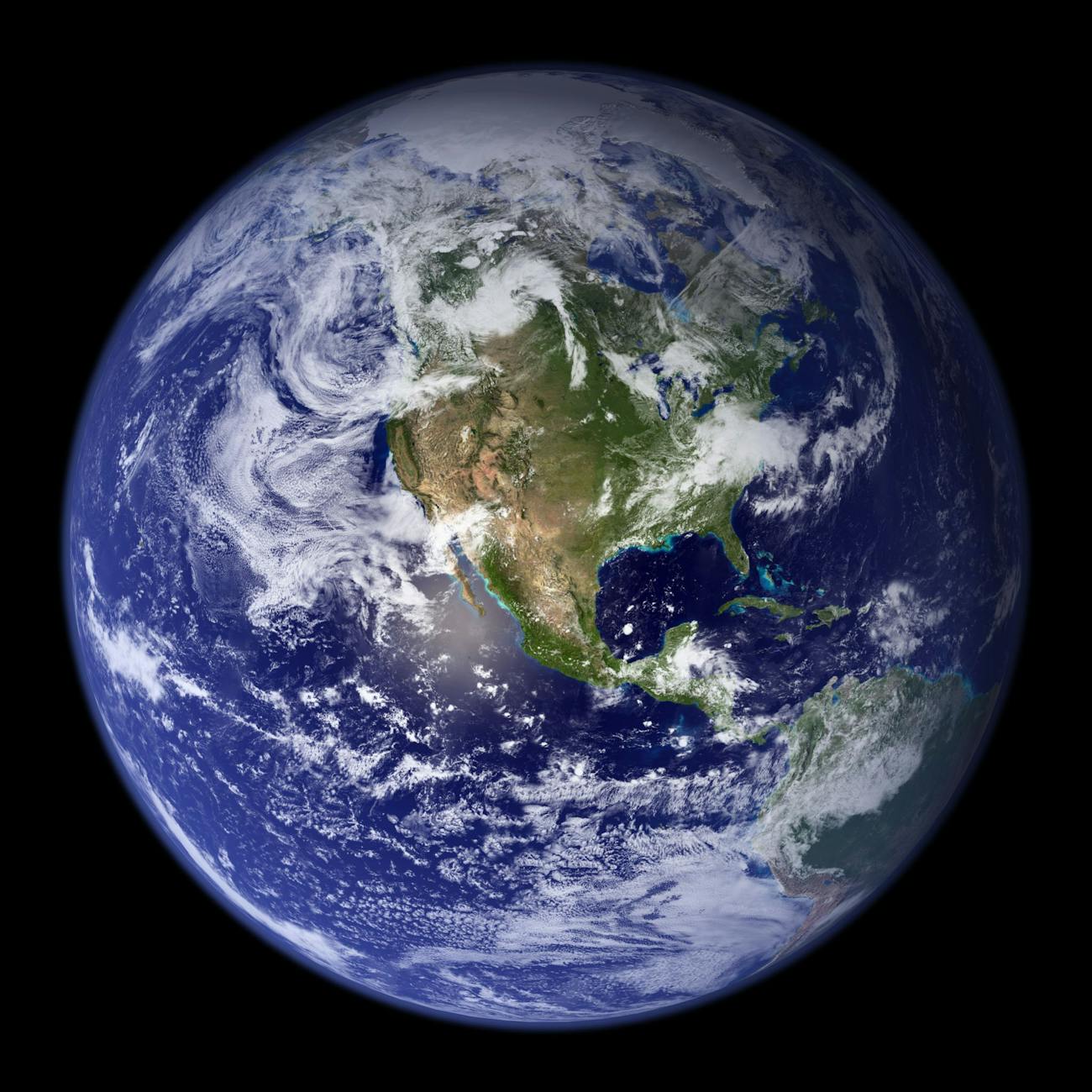
As a teenager I believed that Earth and the Universe was 6,000 years old, and that evolution was a hoax. That was before I knew much about science. I had read agenda driven books that left out, or wrongfully dismissed the evidence for an old earth while presenting faulty arguments for a young earth. My religious background had something to do with me believing these books as well, but I also thought that I had the scientific facts on my side. The books and the so-called evidence presented in these books appeared scientific to me at the time.
Eventually I came to realize that this belief was unsupportable by science and untenable. Not by reading counter arguments, or books disputing the creationist books I had read, but just by learning about the relevant science. I was interested in science, and I got accepted to “Naturvetenskaplig linje”, a Swedish high school program for students with good grades and who showed aptitude for science. This program was like taking lots of AP classes in math/calculus, physics, biology, and chemistry, and it prepared me well for my university level studies in engineering physics and electrical engineering, which eventually led to my PhD.

In physics I learned about radiometric dating. That topic had been mentioned in the young creationist books as well, but they had insisted that radiometric dating was unreliable, they typically only talked about one radiometric dating method (carbon-14), not the several dozen other ones, they did not mention other types of dating methods, and they stated that radioactive decay rates very well could have changed. They also stated that the reason we could see galaxies billions of light years away was because the speed of light had drastically slowed. It was not an honest picture.
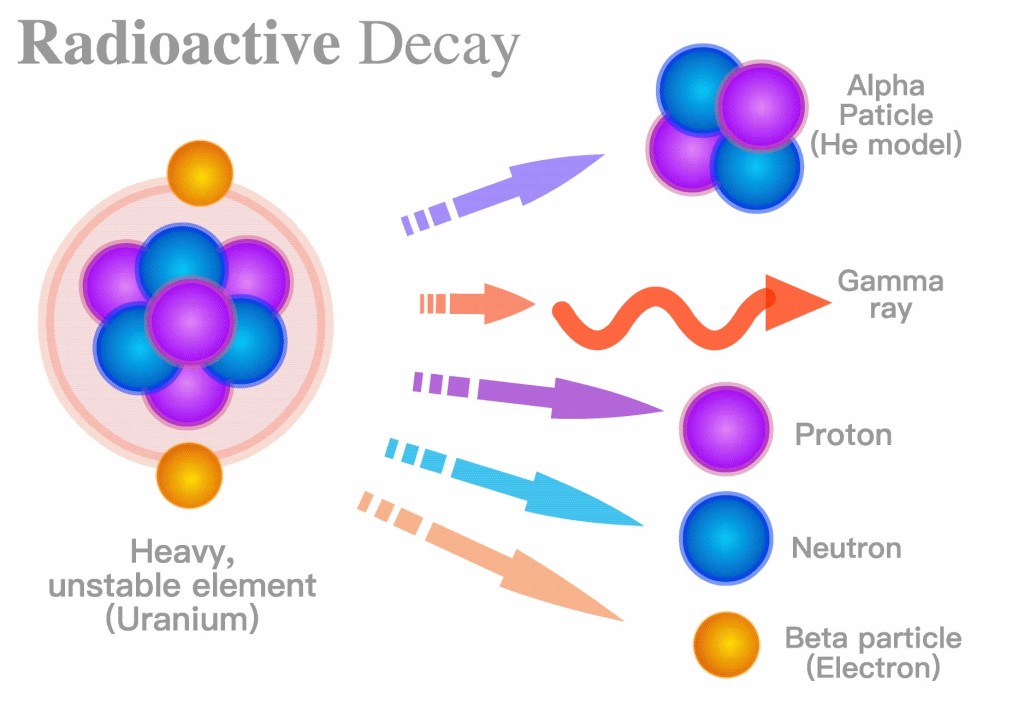
Now I learned why radiometric dating was very reliable if done correctly, and why radioactive decay rates must have remained constant. I learned about the physical laws involved, and I came to realize that highly sped up decays would have fried Adam and Eve. I learned why the speed of light could not have changed, and I encountered a large amount of other evidence for an old earth and an old universe that the creationist books did not say anything about. I realized that I had been bamboozled.
Creationism Vs Evolution
However, there was more. I also had to give up my view of creationism versus evolution. The evidence for evolution, including what creationists like to refer to as “macro-evolution” was overwhelming. From my biology classes at “Naturvetenskaplig linje” I came to realize that the fossil record and the strata as depicted in creationist books was misrepresented. For example, the talk about missing links was misleading. I came to realize that the evidence for evolution came from dozens of other scientific fields and that it all came together to form a very solid and compelling body of evidence.

The creationist books I had read claimed that there was a contradiction between evolution and the second law of thermodynamics. As I studied entropy and the second law of thermodynamics, I came to realize that was just a very simple and silly misunderstanding. It eventually became clear to me that I had been misled on this topic as well. I am planning to make one, or a few, super-facts around this topic.
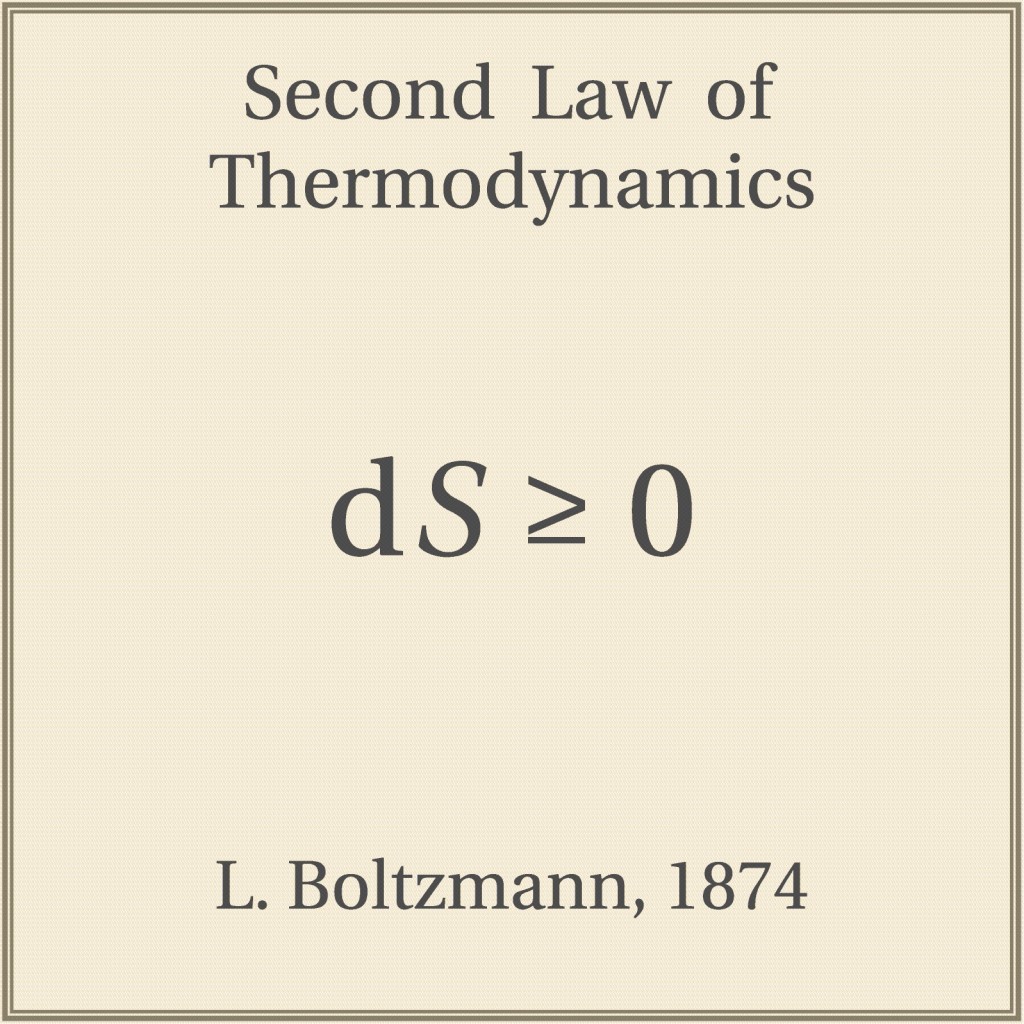
Back in high school (“Naturvetenskaplig linje”) I became very interested in modern physics, quantum physics and relativity, and I was in for more shocks. The second postulate of special relativity states that “the speed of light in free space has the same value c in all inertial frames of reference.” What that means is that no matter what your velocity is and no matter what the velocity of the emitting light source is, all observers, even if moving at different speeds and in different directions, will measure the light to have the same exact speed c = 299,792,458 meters per second or approximately 186,000 miles per second or 671 million miles per hour. This isn’t possible unless the different observers measure time and space differently.
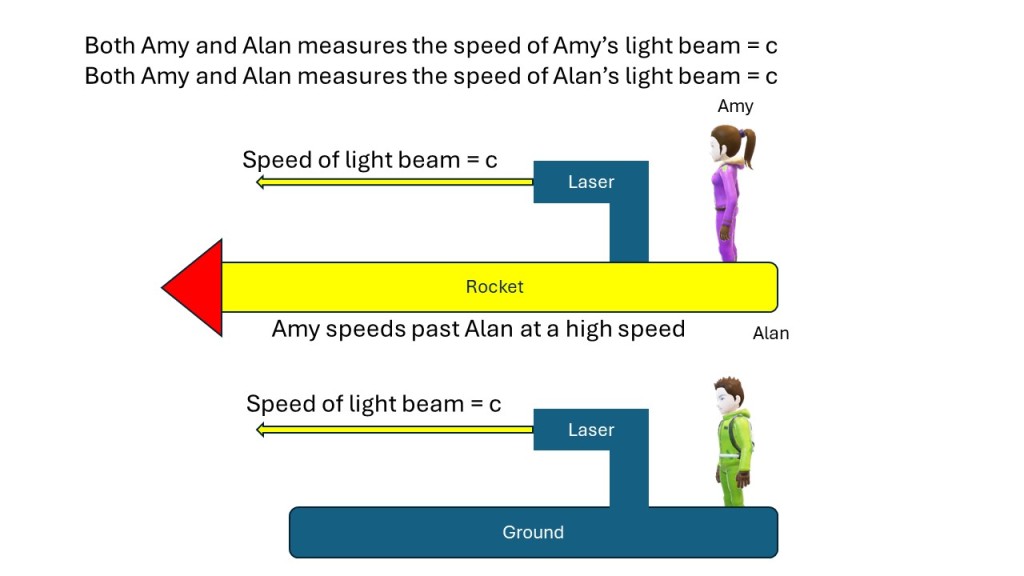
However, as I began to learn more in depth about what this meant for space and time I started seeing contradictions of various kinds. It turned out to be a lot stranger and counter intuitive than I had imagined, and I got angry. It felt like the whole thing was impossible, illogical, and a sham. It seemed like Einstein was wrong and all the physicists were wrong and all the Nobel prize winners in physics were wrong.
Well, I was humble enough to realize that I was not smarter than all of them. It must be something I had not figured out, and finally I understood what that was. I learned to let go of thinking in terms of “absolute time” and instead thinking of time as relative. It was the depiction of time as a fourth dimension that helped me with that.
Like most people I had been preconditioned to think in terms of absolute time. The whole thing became clear to me very quickly and now it seemed perfectly logical. I was able to understand and enjoy all the amazing discoveries that this new way of looking at time and space led to. I think this is a super fact because it is an important insight into time that is highly surprising and in general poorly understood.

That’s when I encountered two books that claimed that special relativity was illogical and a sham. They were written by a self-proclaimed philosopher of time, who had declared war on relativity. He really thought that Einstein was wrong, and that all the physicists were wrong and all the Nobel prize winners in physics were wrong about this. He believed he had figured something out that they hadn’t.
I saw quite easily where he was wrong. First of all, just like me had made unstated assumptions about time and space that were incorrect. Unlike me he could not even use the related physics formulas correctly.
Soon I came to realize that he was far from alone. Once upon a time there were a lot of people who like him had attacked relativity. They not only attacked the theory, but they also went after Einstein himself. In retrospect this looks pathetic, but it is arrogance again. If you have a hard time understanding something, don’t assume that you are correct and that the experts must be wrong.
One thing these failed critics all had in common was that they did not go after the General Theory of Relativity, which is even more abstract, complicated and counterintuitive. Why? Probably because it was so abstract and mathematical that they couldn’t even get started, and that should have been hint for them.
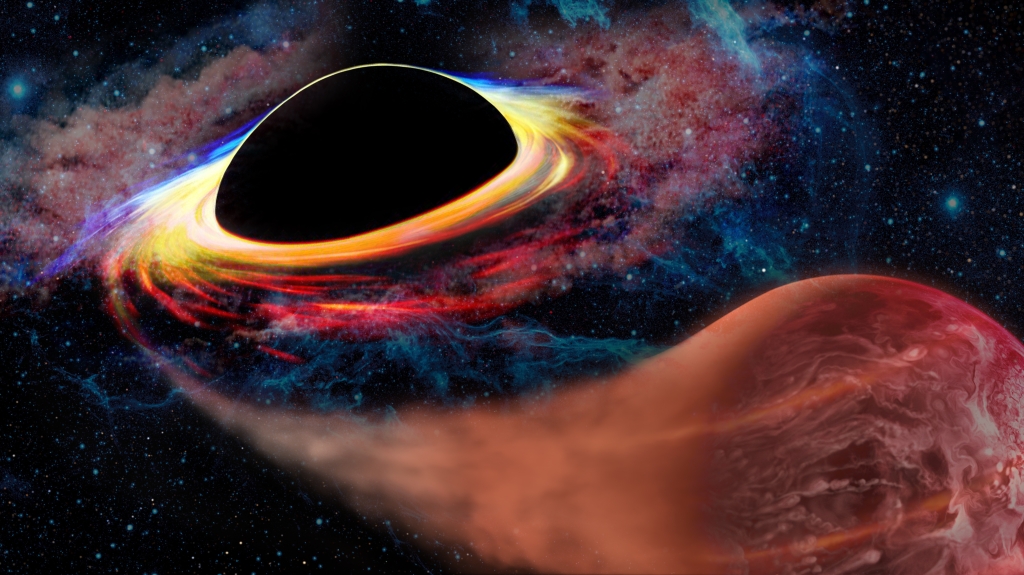
Rethinking My Beliefs
Well, when it is about bamboozlement, being surprised, and learning to understand what at first seems strange, I was far from done. About 15 years ago, I became increasingly skeptical and doubtful of global warming or climate change as it is more commonly called now a day. The reason was that I almost exclusively read and watched rightwing news media such as world-net-daily (tended to push conspiracy theories), Newsmax and Fox News.
I believed in the concept of global warming, it is basic science after all, but I thought that it was exaggerated and that it was promoted and distorted by left-wing agendas, and I incorrectly believed that there was no scientific consensus on the issue. I believed that whatever warming that existed could be explained more by natural cycles than our fossil fuels.
I also bought into the false narrative that this was about environmentalist ideology, politics, or even a sort of environmentalist religion, and not a real and serious problem. My disdain for environmentalists, and my gut feelings certainly aided the propaganda in misleading me. In addition, I read a lot by Björn Lomborg and Patrick J. Michaels and I believed them. To clarify, I did not know it at the time, but I was wrong, very wrong. Below is a video from NASA showing the annual shrinkage of the arctic sea ice.
I should say that I had some lingering doubts about my own “climate skepticism”. During my travels to national parks, the great barrier reef, and other places, I encountered guides who were scientists, as well as others, and they told me about coral bleaching, ocean acidification, receding and disappearing glaciers, the pine beetle problem, white pine blister rust, the destruction of forests due to global warming, and I could see some of the effects with my own eyes in northern Sweden, which is close to the arctic and therefore the effects of global warming are more visible.
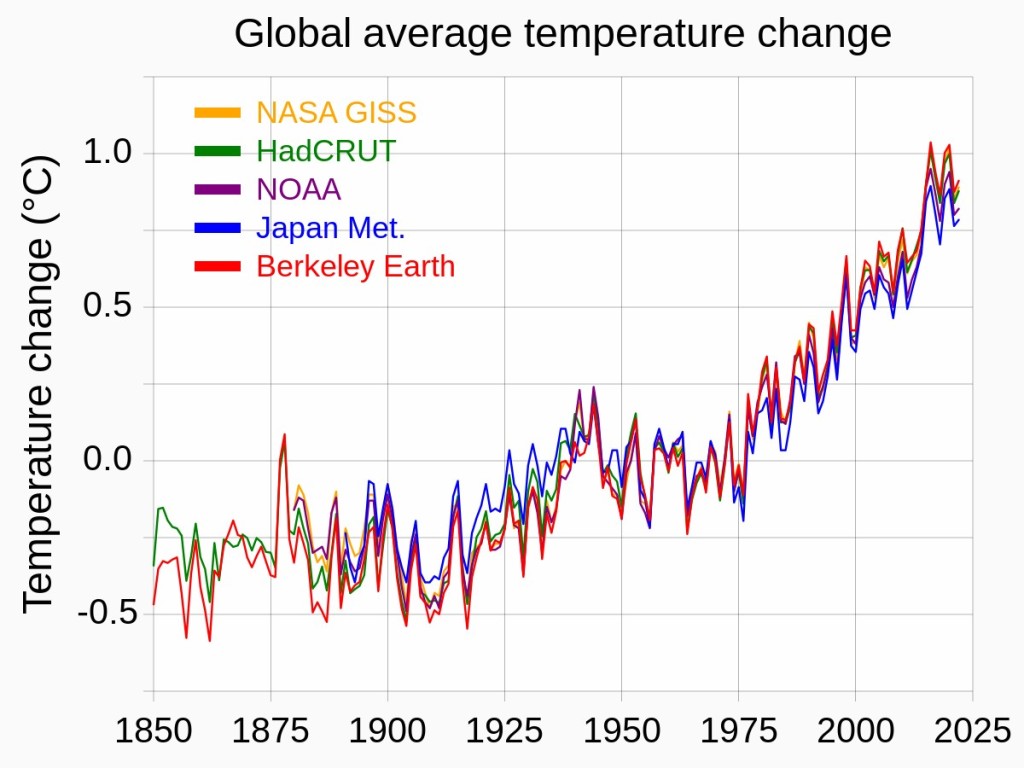
It also bothered me that my physics hero Stephen Hawing was a global warming alarmist and that other leading physicists and astrophysicists whom I admired, such as Michio Kaku, promoted and warned us about human caused global warming. Add that popular science magazines I subscribed to, such as Discover and Scientific American frequently wrote about global warming. I should say that I tended to skip those articles and I believed those magazines had a left leaning bias.
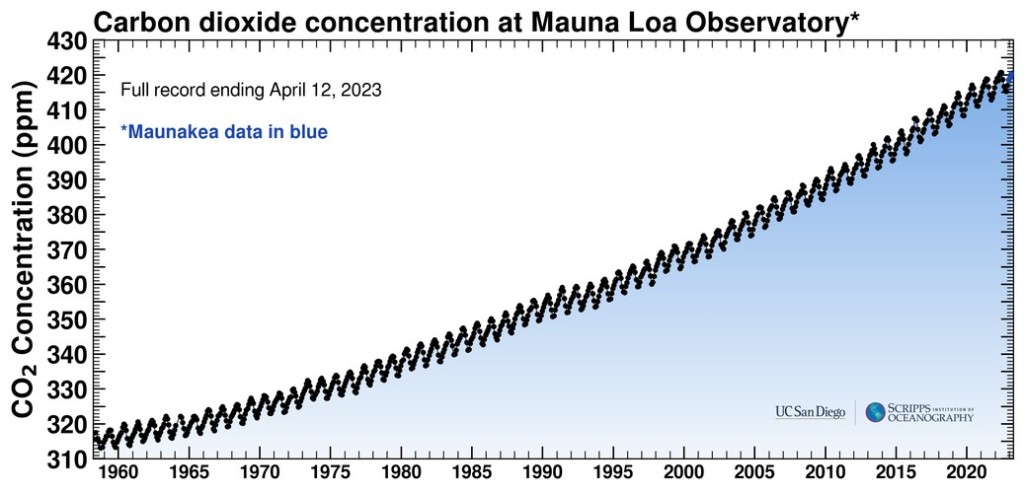
However, there were too many red flags regarding my “climate skepticism”. It seemed like a lot of people knew and understood something I didn’t. This prompted me to take a deep dive into the matter. I had a decent scientific background and that helped. I learned that global warming is not caused by natural cycles, something the experts on natural climate cycles repeatedly stressed. It is not the sun, or volcanoes and it isn’t a normal cycle, and the recent increase in temperature is disturbingly quick.
I also learned that warming caused by greenhouse gas emissions have a certain fingerprint; the arctic will warm faster, nights will warm faster, the tropopause would be pushing up the boundary with the stratosphere, the mesosphere would be cooling and contracting (think the troposphere as being a blanket). All of that has been observed. Long story short, I had been bamboozled. We not only know that Global Warming is real, but we also know that we are the cause, primarily because of our greenhouse gas emissions. That is yet another super fact. It has many doubters and yet the evidence and the experts are clear on the fact.
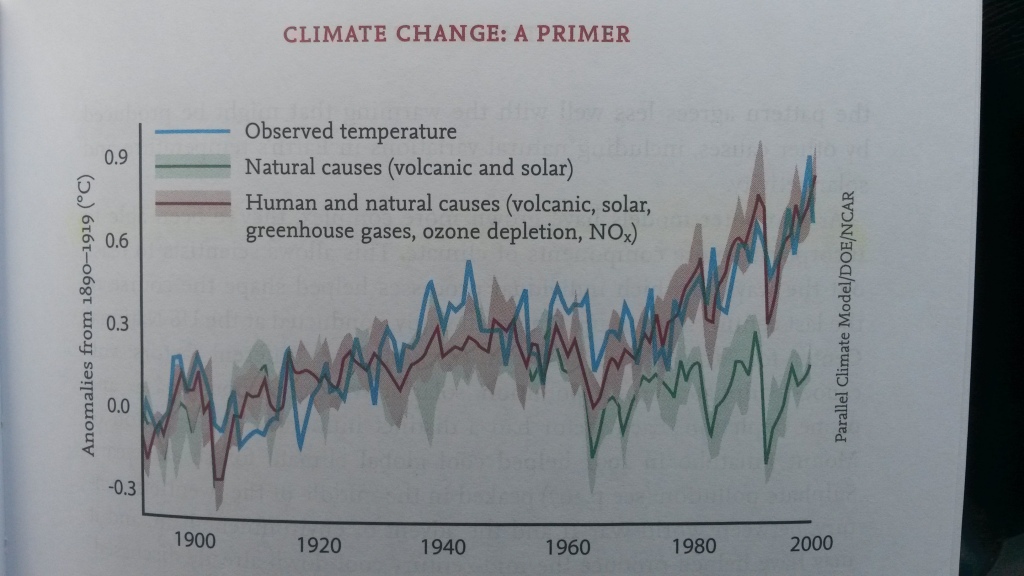
To see the other Super Facts click here
]]>